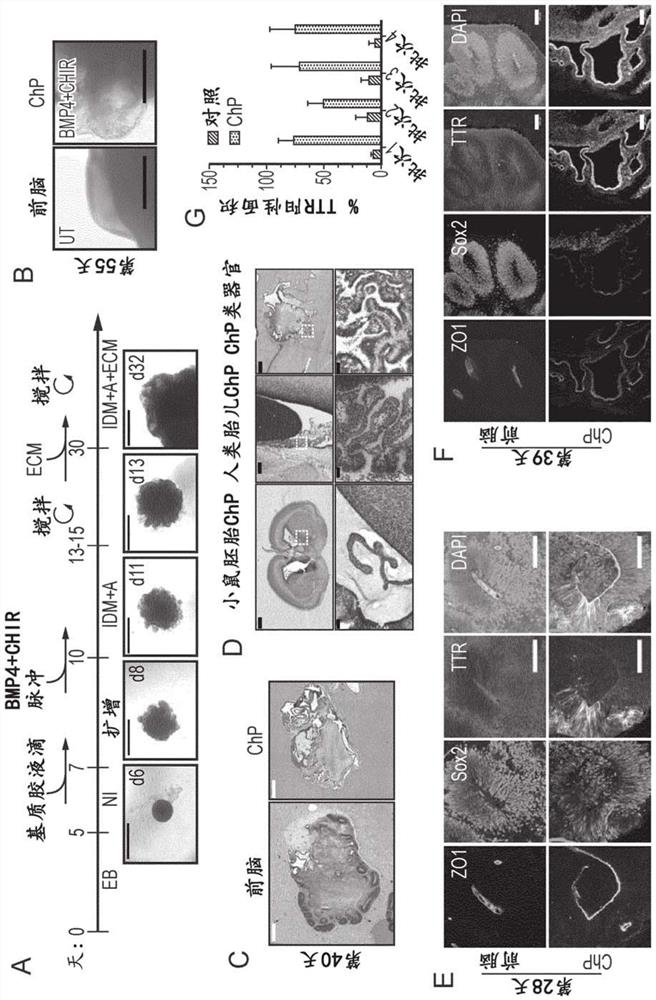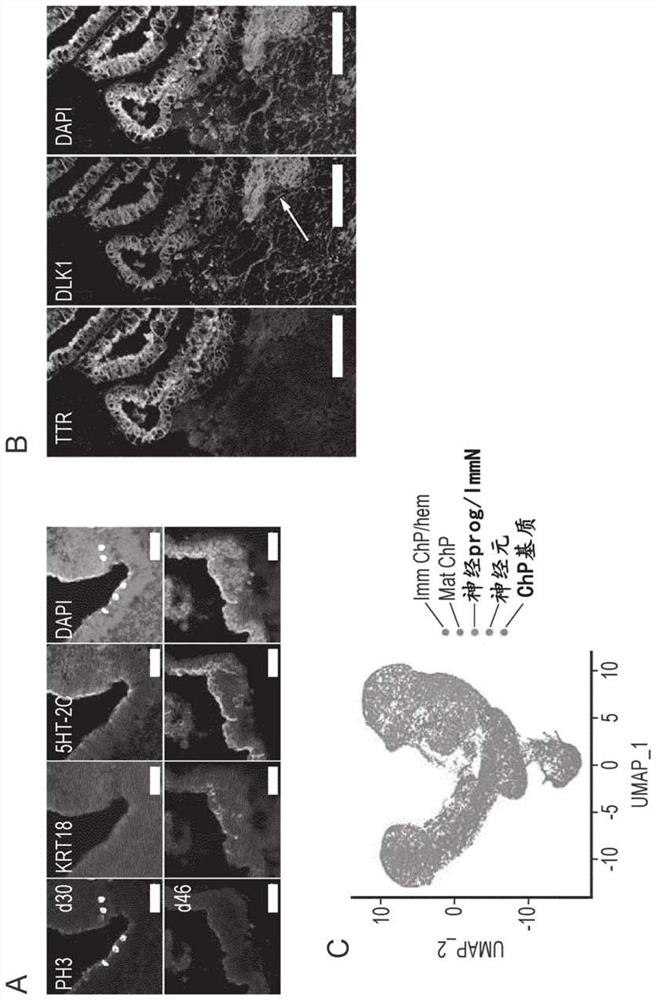Choroid plexus organoids and methods for production thereof
An organoid, choroid plexus technology, applied in the field of generating choroid plexus organoids, which can solve problems such as poorly understood availability
- Summary
- Abstract
- Description
- Claims
- Application Information
AI Technical Summary
Problems solved by technology
Method used
Image
Examples
Embodiment 1
[0264] As previously reported, cerebral organoids are characterized by intrinsic self-organization, with recent protocols yielding predominantly forebrain features (13, 14), which also include ChP epithelium (Fig. 7A) (9, 13). Therefore, to study the development of human ChPs, we established a protocol based on a brain organoid approach to generate ChPs in a reliable and reproducible manner.
[0265] The derivation of ChP cells in vitro using the backing factor Bmp4 alone (15) and in combination with the Wnt activator molecule CHIR (16) has been previously reported.
[0266] Therefore, to promote ChP fate in brain organoids, Bmp4 and CHIR were given as pulses starting on day 10 of the modified brain organoid protocol (see Methods) (Fig. 1A, 7B, 7C) (7, 9, 13) . At day 14, non-committed forebrain organoids developed large, rounded neuroepithelial lobes, whereas in Bmp4 / CHIR-treated organoids, we observed more elongated neuroepithelial organization (Fig. 7B). This observation ...
PUM
 Login to View More
Login to View More Abstract
Description
Claims
Application Information
 Login to View More
Login to View More - R&D
- Intellectual Property
- Life Sciences
- Materials
- Tech Scout
- Unparalleled Data Quality
- Higher Quality Content
- 60% Fewer Hallucinations
Browse by: Latest US Patents, China's latest patents, Technical Efficacy Thesaurus, Application Domain, Technology Topic, Popular Technical Reports.
© 2025 PatSnap. All rights reserved.Legal|Privacy policy|Modern Slavery Act Transparency Statement|Sitemap|About US| Contact US: help@patsnap.com



